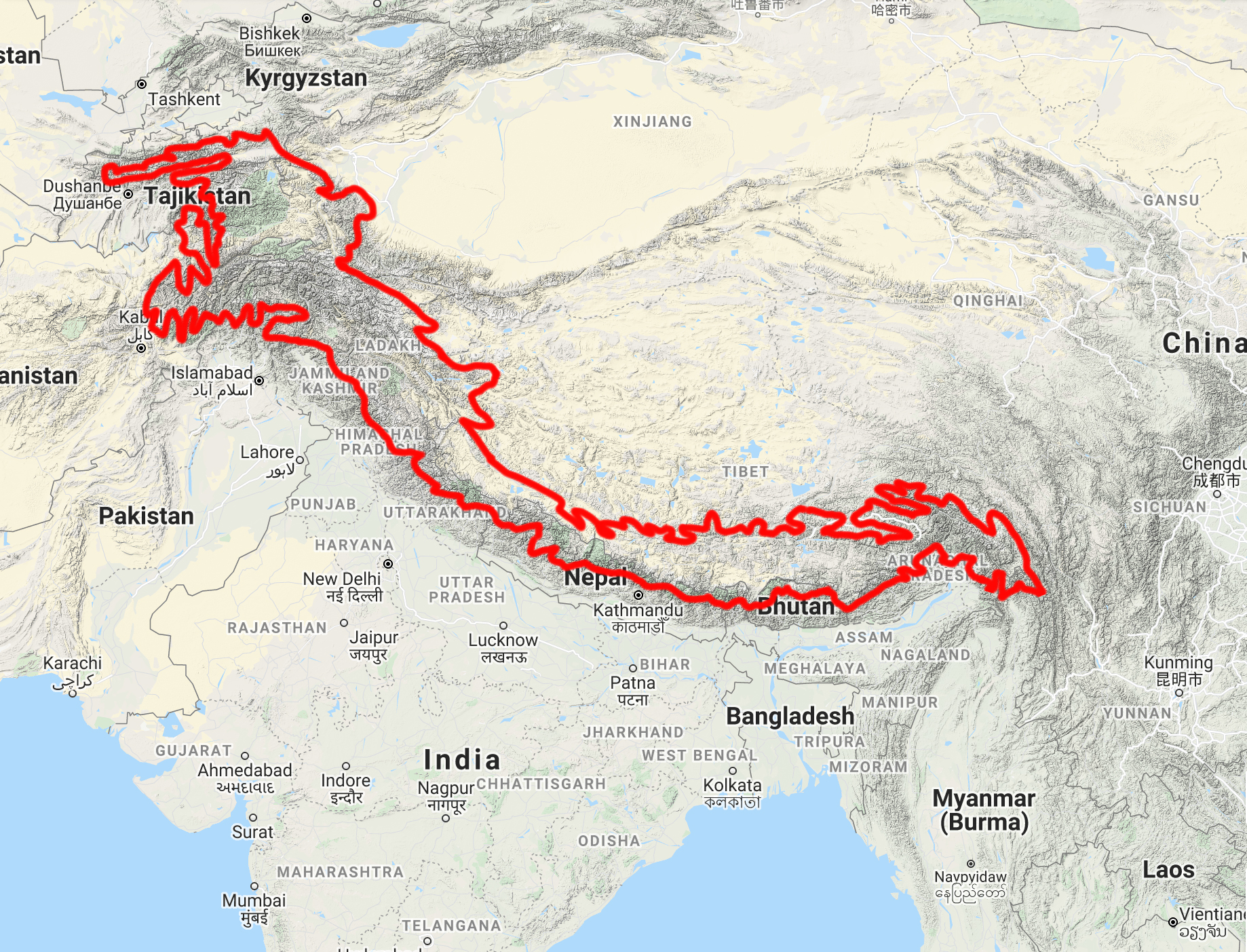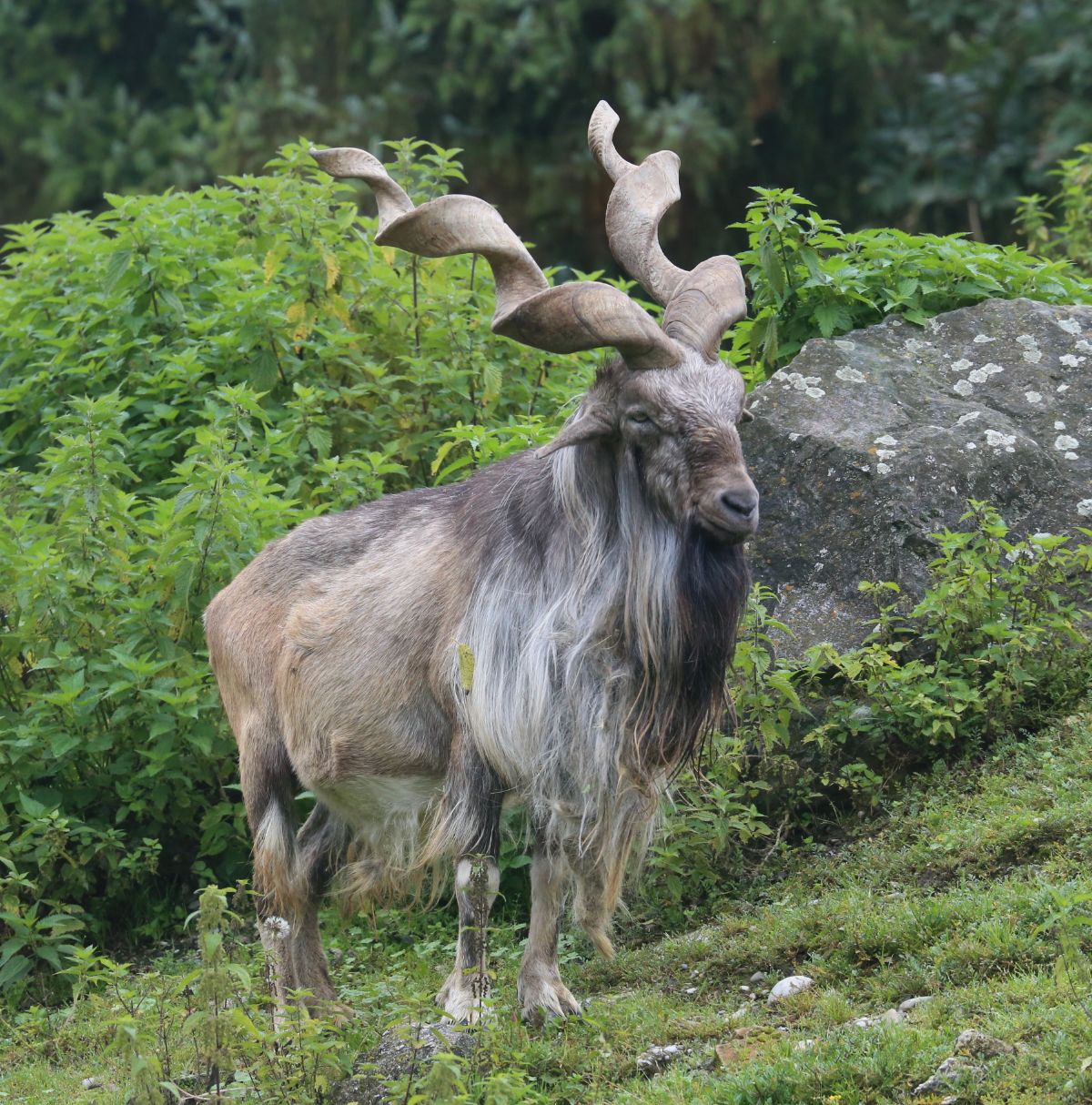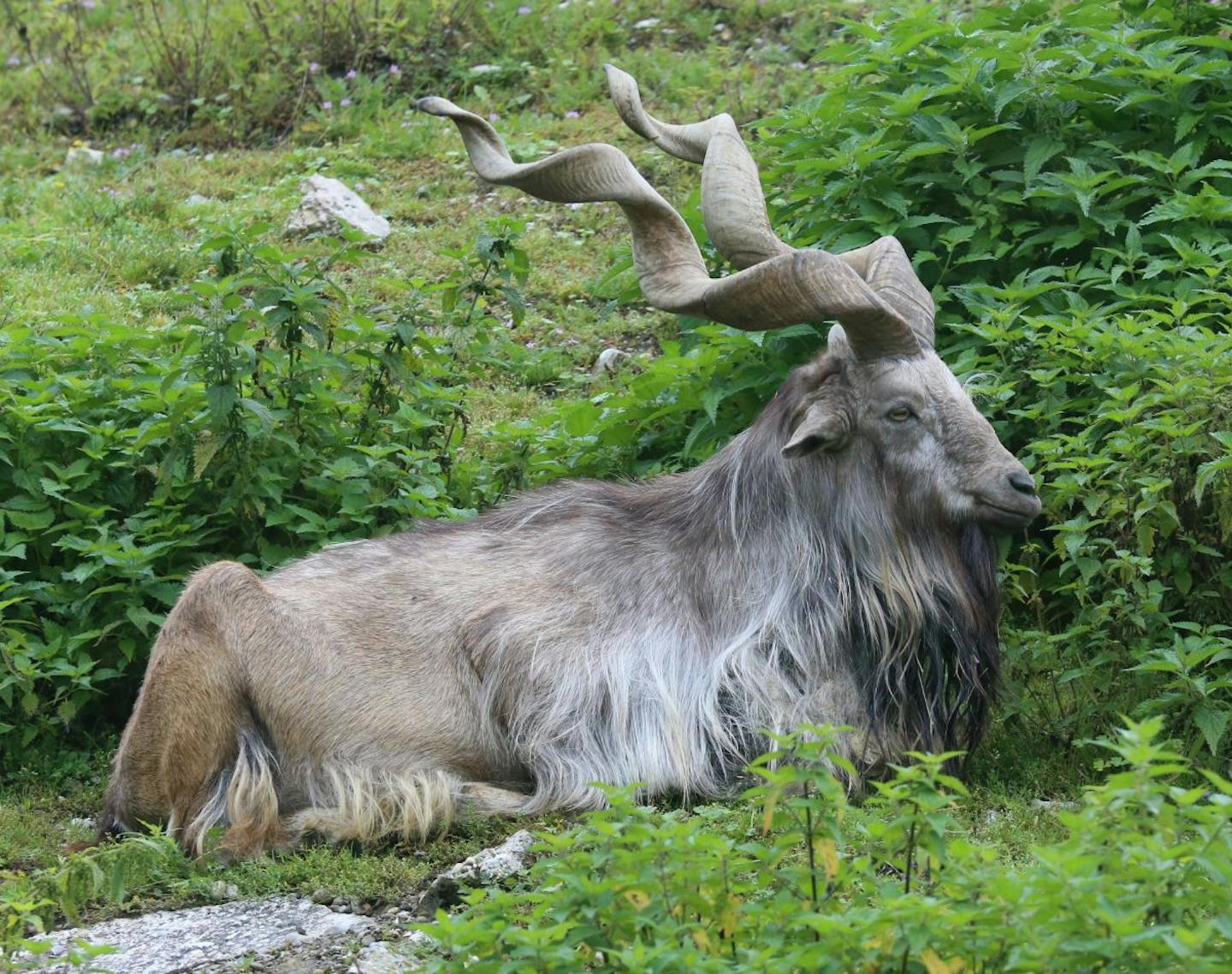Markhors: magnificent corkscrew horned goats living high in the Himalayas
- Nature Conservation
- Land Conservation
- Wildlife
- Mammals
- Himalayas & Tibetan Plateau
- Eastern Eurasia Realm
One Earth’s “Species of the Week” series highlights the flagship species of each of the 844 unique ecoregions contained within Earth’s bioregions.
In recent years, the domestic goat has been getting quite the press for their adorable attributes and how well they play on social media. Videos of playful kids, hilariously screaming full-grown goats, and even yoga sessions on the farm can be seen across feeds. However, much like the derpy corgi is in stark contrast to its grey wolf ancestor, so to is the modern goat known today. In the Himalayan Mountain Range, beneath the shadow of Mount Everest, is where Charles Darwin speculated that contemporary goat arose. With massive spiral horns that resemble a perfect corkscrew, standing as high as six feet, weighing up to 240 pounds, and with an epic beard extending from jaw to underbelly, the markhor is what makes awe-inspiring fairytale goats now make sense.

The markhor is the flagship species of the Hindu Kush Alpine Meadow ecoregion, part of the Tibetan-Pamir Alpine Steppes, Shrublands & Mountain Forests (PA41) bioregion in Eastern Eurasia.
This ecoregion boasts breath-taking vistas alongside a varied flora and fauna. The meadows are also home to vast herds of livestock owned by local nomadic pastoralists. This disjunct ecoregion forms part of the western Hindu Kush Himalayas in Afghanistan and is bordered by Pakistan in the east and Tajikistan in the north.
Markhor is a Persian word meaning “snake-eater” or “snake-killer.” In folklore, the animal is allegedly able to kill snakes with its spiral horns and then consume the serpents. There, after a markhor has chewed its cud and spit it on the ground, the dried material is sought after by the local people, who believe it helps extract poison from snakebites. There is no evidence of markhors eating snakes or killing them with their horns. Zoologists now either think the legend comes from the markhor’s ability to step on snakes and kill them with their powerful hooves or that their horns resemble the coiling of snakes.

Ranging from northern India, Pakistan, Afghanistan to Turkestan, the markhor live high in the mountains anywhere from 2,000 to 11,800 feet in elevation. They typically live in scrub forests where they feed by gazing and reaching high branches standing on their hind legs. It is a known fact that the males use their corkscrew horns to battle one another for mating rights. Lunging at full force, they will lock horns until one can render the other off balance. Gestation lasts four to five months and results in the birth of one or two kids, though sometimes three. Females use their horns to protect their young from predators. Golden eagles have been reported to prey upon young markhor, and mothers have been seen attempting to spear the winged predators.
Nine is the average number of markhor living in a flock, composed of females and young. However, numbers can range to as large as 30-100 during mating season. Males are primarily solitary as they live on the open grassy patches and clear slopes in the forests, while females and young tend to climb to the high rocky ridges above.
Poaching for their unique horns and hunting for the wildlife meat trade are mostly to blame for the decreasing population of markhors. Currently listed as critically endangered, the Pakistan government has made it the national animal and the mascot for their intelligence agency, Inter-Services Intelligence in hopes of spreading awareness and awe at the magnificent ancestor of the goat.
Interested in learning more about the bioregions of Eastern Eurasia? Use One Earth's interactive Navigator to explore bioregions around the world.
Launch Bioregion Navigator


